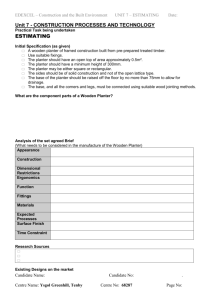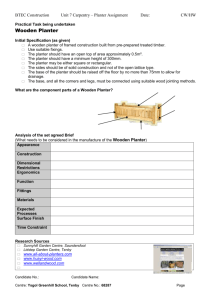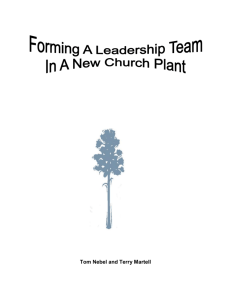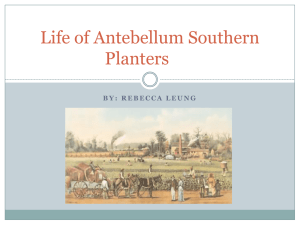In-Field Planter Adjustments
advertisement
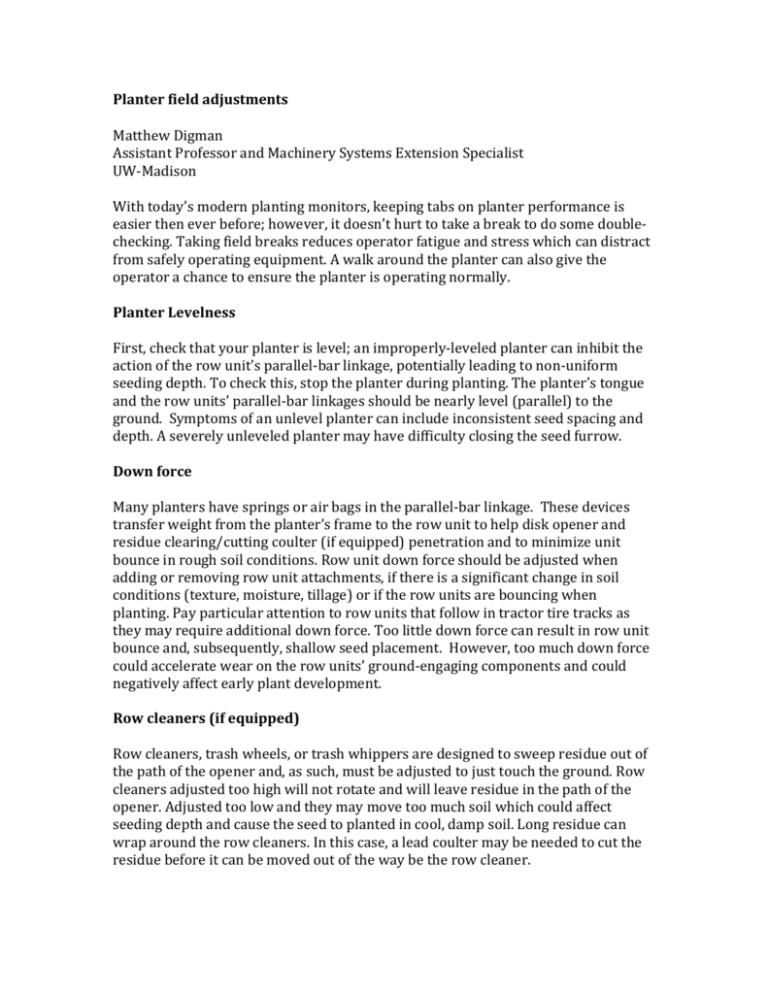
Planter field adjustments Matthew Digman Assistant Professor and Machinery Systems Extension Specialist UW-Madison With today’s modern planting monitors, keeping tabs on planter performance is easier then ever before; however, it doesn’t hurt to take a break to do some doublechecking. Taking field breaks reduces operator fatigue and stress which can distract from safely operating equipment. A walk around the planter can also give the operator a chance to ensure the planter is operating normally. Planter Levelness First, check that your planter is level; an improperly-leveled planter can inhibit the action of the row unit’s parallel-bar linkage, potentially leading to non-uniform seeding depth. To check this, stop the planter during planting. The planter’s tongue and the row units’ parallel-bar linkages should be nearly level (parallel) to the ground. Symptoms of an unlevel planter can include inconsistent seed spacing and depth. A severely unleveled planter may have difficulty closing the seed furrow. Down force Many planters have springs or air bags in the parallel-bar linkage. These devices transfer weight from the planter’s frame to the row unit to help disk opener and residue clearing/cutting coulter (if equipped) penetration and to minimize unit bounce in rough soil conditions. Row unit down force should be adjusted when adding or removing row unit attachments, if there is a significant change in soil conditions (texture, moisture, tillage) or if the row units are bouncing when planting. Pay particular attention to row units that follow in tractor tire tracks as they may require additional down force. Too little down force can result in row unit bounce and, subsequently, shallow seed placement. However, too much down force could accelerate wear on the row units’ ground-engaging components and could negatively affect early plant development. Row cleaners (if equipped) Row cleaners, trash wheels, or trash whippers are designed to sweep residue out of the path of the opener and, as such, must be adjusted to just touch the ground. Row cleaners adjusted too high will not rotate and will leave residue in the path of the opener. Adjusted too low and they may move too much soil which could affect seeding depth and cause the seed to planted in cool, damp soil. Long residue can wrap around the row cleaners. In this case, a lead coulter may be needed to cut the residue before it can be moved out of the way be the row cleaner. Tire Pressure On planters ground-driven by a pneumatic tire, tire pressure should be checked daily. These planters use the tire for ground driving the seed, fertilizer and chemical metering systems and therefore the tire needs to be properly inflated to ensure the same tire diameter used to create the rate charts in your operator’s manual. An under-inflated tire will reduce the gear reduction of the drive, leading to a higher seeding/fertilization rate as the tire makes more rotations for each acre of ground covered. The opposite is true for an over-inflated tire. Checking Seed Population To check population, pick a couple of row units to monitor for a repeated measurement. Release the closing wheel down force and use a chain or strap to restrain the closing wheels so they don’t touch the ground. Then plant long enough so that you have a chance to get the planter up to speed. This may require planting a little farther than desired, but it will ensure the observed population will be representative of the rest of the field. Next, measure the length of the row that will represent 1/1000th of an acre. This will make calculating population easy. Use the table below to determine how far to measure for your planter setup. After you have measured the correct distance that corresponds to 1/1000th of an acre, count the number of seeds found in that distance. To find your population, simply multiply the number of seeds counted by 1000. For example, if you are planting 30-inch rows and you count 32 seeds in 17 ft 5 in, then the seed population will be 32,000 seeds per acre. Because seeds can be difficult to see in the furrow, it is a good idea to do this test over a couple of rows to get a good idea of the actual seed population. Planting distance needed to cover 1/1000th of an acre for each row. First measure the correct distance for your planter setup, then count the number of seeds in the furrow and multiply by 1000 to convert to seeds/acre. Planting width (in) Distance 15* 34 ft 10 in 20 26 ft 1 in 30 17 ft 5 in 38 13 ft 10 in * This number can also be used for twin-row planted on 30-inch centers. Planting speed The effect of planting speed on planter performance is well known. Manufacturers have worked to design planters to operate at higher speeds, but seed singulation and depth control still become more difficult at higher planting speeds. I’m not advocating slowing down, but if you’re not happy with the performance of your planter, slowing down a bit is an easy way to potentially improve planter performance. All together these suggestions could consume a considerable amount of time, but coupled with needed breaks they will ensure your planter is performing as expected. I hope these tips ensure you a safe and productive plating season.
